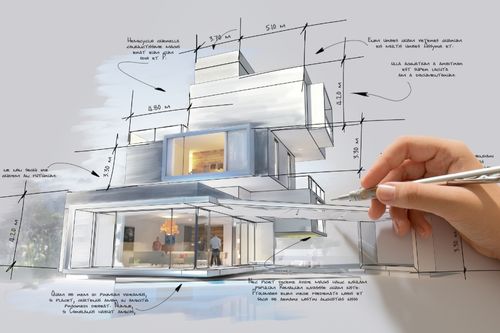A Comprehensive Summary of Building Styles and Their Influence on Modern City Planning and Advancement
Building designs have long offered as a mirror to the social worths and technical developments of their time, playing an important role in forming contemporary city planning and development. From the majesty of Neoclassicism to the utilitarian method of Brutalism, each style has actually introduced special ideas that influence urban appearances and capability.
Historic Overview of Architectural Styles

As cultures transitioned with the Middle Ages, Gothic style arised, defined by its verticality and elaborate detailing, matching the spiritual ambitions of the age. The Renaissance noted a rebirth of classical suitables, combining art and architecture in innovative manner ins which influenced subsequent designs across Europe.

Today, architectural styles remain to evolve, driven by globalization and sustainability worries, showing a dynamic interplay in between heritage and development. This historic review underscores the value of style as a mirror of societal development and as a stimulant for urban development.
Secret Architectural Styles Explained
The variety of building designs shows the myriad impacts that shape our developed setting, each personifying distinct characteristics and social values. Secret building designs consist of Timeless, Gothic, Baroque, Innovation, and Postmodernism, each representing distinct historical contexts and visual philosophies.
Classical design, rooted in ancient Greece and Rome, highlights balance, percentage, and making use of columns (cda architects). On the other hand, Gothic style, flourishing in the center Ages, is identified by pointed arcs, ribbed safes, and flying buttresses, creating an ethereal quality in basilicas. Baroque design, arising in the 17th century, is noted by majesty, intricate decoration, and a dynamic interplay of light and darkness
Innovation, which obtained energy in the early 20th century, prioritizes function over kind, making use of brand-new products like steel and glass to develop minimal structures. Postmodernism, reacting against the austerity of Innovation, welcomes eclecticism and historic recommendation, commonly integrating playful aspects and paradox.

Influence On Urban Preparation
In shaping the growth of cities, architectural designs considerably affect urban preparation choices. The option of building style often dictates the visual appeals, capability, and overall personality of metropolitan atmospheres. Innovation, with its emphasis on minimalism and capability, encourages open areas and the assimilation of technology, shaping city designs that focus on efficiency and ease of access. Alternatively, traditional styles might emphasize historical conservation, causing metropolitan designs that maintain cultural heritage and promote pedestrian-friendly atmospheres.
Moreover, building designs can affect zoning guidelines and land make use of plans. Urban coordinators have to consider the prevailing building fads when making areas, making certain that brand-new advancements balance with existing frameworks. This consideration promotes cohesive urban landscapes and boosts area identification.
The application of certain architectural styles can also affect socioeconomic aspects within a city. High-end modern layouts may bring in upscale residents and businesses, leading to gentrification, while extra affordable real estate services could prioritize practical and lasting designs to suit diverse populaces. cda architects. Ultimately, the interaction in between architectural designs and urban planning produces dynamic cities that show both historical context and modern needs, shaping the lived experiences of their occupants
Sustainability and Modern Architecture
Building styles play an essential role in resolving contemporary difficulties, particularly in the world of sustainability. As urban areas increase and environmental worries magnify, modern architecture significantly embraces sustainable layout principles that prioritize power effectiveness, source preservation, and minimal environmental influence.
Contemporary architectural motions, such as biophilic layout and environment-friendly design, supporter for structures that balance with their environments, making use of all-natural materials and promoting biodiversity. These styles typically include renewable energy sources, such as photovoltaic panels and wind generators, to reduce reliance on nonrenewable fuel sources and lower carbon footprints.
Furthermore, the combination of advanced technologies, such as clever building systems, boosts power learn this here now management, optimizing source use while ensuring owner comfort. Ingenious water monitoring techniques, consisting of rain harvesting and greywater recycling, further add to lasting city settings.
Especially, sustainability prolongs beyond environmental concerns; it incorporates social and economic measurements too. By fostering community well-being and advertising inclusivity, modern building styles line up with sustainable development goals. Subsequently, the evolution of building practices remains to shape resistant cities that not only satisfy the demands of the existing however also guard the future for generations to find.
Neighborhood Engagement in Layout
Neighborhood involvement in design functions as a critical bridge between architects and the populations they serve, ensuring that the built setting reflects the requirements and goals of its individuals. This joint process invites area members to add their insights and choices, fostering a feeling of ownership and duty toward the areas they live in.
Effective area involvement uses various approaches, such as workshops, surveys, and public online forums, to gather diverse viewpoints. These techniques assist in a two-way discussion, enabling architects to recognize local contexts while equipping citizens to articulate their issues and wishes. This inclusivity not just boosts the style quality however also advertises social equity by resolving the distinct difficulties dealt with by marginalized teams.
Furthermore, area involvement can lead to cutting-edge remedies that may not arise in a typical layout process. By incorporating regional knowledge and social worths, engineers can produce rooms that resonate even more deeply with individuals, boosting functionality and sustainability. Inevitably, prioritizing community involvement in layout processes causes settings that support social communications, support wellness, and reinforce neighborhood ties, thus playing an essential role in shaping modern metropolitan landscapes.
Verdict
Building designs have actually profoundly influenced modern-day city planning and development, showing evolving social and technical contexts. As cities continue to grow and adapt, the ongoing discussion in between building article source heritage and contemporary layout principles will remain vital in producing comprehensive, dynamic spaces that see here now improve quality of life and promote social equity.